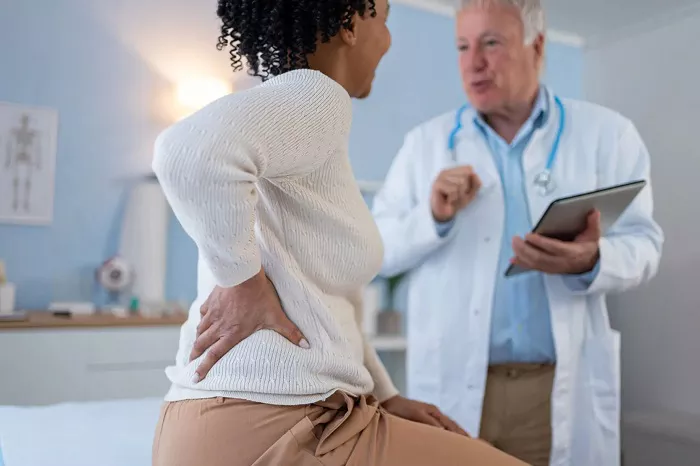Penile yeast infections, while less common than vaginal yeast infections, can cause significant discomfort and concern for affected men. As a physician specializing in men’s health, I’ve treated numerous cases of this fungal infection medically known as Candida balanitis. This comprehensive guide will walk you through the most effective treatments, from antifungal medications to natural remedies, while explaining how to prevent recurrence and when to seek medical attention.
Understanding Penile Yeast Infections
A penile yeast infection occurs when there’s an overgrowth of Candida albicans (or other Candida species) on the penis. Common symptoms include:
- Redness and shiny appearance of the glans (head) of the penis
- Itching, burning, or irritation
- White, clumpy discharge under the foreskin (in uncircumcised men)
- Pain during urination or sex
- Unpleasant odor
- Small red spots or rash
Primary Causes and Risk Factors
Several factors increase susceptibility to penile yeast infections:
- Unprotected sex with a partner who has a vaginal yeast infection
- Poor hygiene, especially in uncircumcised men
- Diabetes (high blood sugar feeds yeast)
- Antibiotic use (kills protective bacteria)
- Compromised immune system
- Tight, non-breathable underwear
- Excessive moisture in the genital area
Medical Treatments
Topical Antifungal Creams (Most Common Treatment)
Clotrimazole (1%)
- Applied twice daily for 7-14 days
- Available over-the-counter
- Effective for mild to moderate cases
Miconazole (2%)
- Similar to clotrimazole but may cause less irritation
- Apply twice daily for 1-2 weeks
Nystatin Cream
- Particularly effective against Candida species
- Prescription strength
- Apply 2-4 times daily for 1-2 weeks
Oral Antifungal Medications
Fluconazole (Diflucan)
- Single 150mg dose often clears infection
- Prescription required
- Preferred for recurrent or severe cases
Itraconazole
- Alternative oral antifungal
- Typically taken for 3-7 days
- Used when fluconazole isn’t effective
Natural and Home Remedies
Coconut Oil
- Contains caprylic acid with natural antifungal properties
- Apply topically 2-3 times daily
- Use virgin, unrefined coconut oil
Tea Tree Oil (Diluted)
- Powerful antifungal but must be diluted (1-2 drops per tablespoon of carrier oil)
- Apply twice daily
- Discontinue if irritation occurs
Apple Cider Vinegar (Diluted Soaks)
- Restores natural pH balance
- Mix 1 tablespoon in 1 cup warm water
- Soak for 10 minutes, then rinse thoroughly
Probiotic Yogurt (Topical)
- Plain, unsweetened yogurt with live cultures
- Apply directly to affected area for 15-20 minutes
- Contains beneficial bacteria that fight yeast
Garlic
- Natural antifungal (allicin compound)
- Can be consumed raw or as odorless supplements
- Topical use not recommended (may irritate skin)
Hygiene and Lifestyle Adjustments
During Treatment:
- Wash gently with mild, fragrance-free soap
- Dry thoroughly after washing
- Wear loose, breathable cotton underwear
- Avoid sexual activity until cleared
- Change underwear twice daily if needed
For Prevention:
- Practice good genital hygiene
- Always urinate after sex
- Keep the area dry
- Manage blood sugar if diabetic
- Avoid unnecessary antibiotics
- Consider probiotic supplements
When to See a Doctor
Seek medical attention if:
- Symptoms persist after 2 weeks of treatment
- The infection recurs frequently (more than 4 times per year)
- You develop fever or the area becomes increasingly red/swollen
- You have diabetes or a weakened immune system
- Sores or blisters appear
Treatment for Recurrent Infections
For men experiencing frequent recurrences:
- Longer treatment course (2-4 weeks of antifungals)
- Oral fluconazole weekly for several months (under doctor supervision)
- Treat sexual partner(s) if applicable
- Evaluate for diabetes if not previously diagnosed
- Consider circumcision if uncircumcised with chronic issues
The Gut-Yeast Connection
Emerging research shows gut health affects susceptibility to yeast infections:
- Probiotics (especially Lactobacillus strains) help prevent overgrowth
- Prebiotic fibers feed beneficial bacteria that keep yeast in check
- Reducing sugar in diet starves yeast organisms
Consider taking a high-quality probiotic containing:
- Lactobacillus rhamnosus
- Lactobacillus acidophilus
- Bifidobacterium bifidum
Sample Treatment Protocol
Days 1-7:
- Apply clotrimazole cream twice daily
- Take oral probiotic supplement
- Use diluted apple cider vinegar soak once daily
- Wear loose cotton underwear
- Avoid sex and masturbation
Days 8-14:
- Continue probiotics
- Monitor for symptom resolution
- Begin reintroducing sexual activity with protection
Ongoing Prevention:
- Maintain good hygiene habits
- Consider weekly probiotic yogurt application
- Manage underlying conditions like diabetes
- Wear breathable fabrics
Special Considerations
For Uncircumcised Men:
- Pay special attention to cleaning under foreskin
- Ensure complete drying after washing
- Consider retracting foreskin periodically during day
For Diabetic Men:
- Tight blood sugar control is essential
- Yeast infections may be more persistent
- May require longer treatment courses
For Sexual Partners:
- Female partners should be evaluated/treated if having symptoms
- Use condoms until both partners complete treatment
- Avoid unprotected sex during active infection
Conclusion
For most cases of penile yeast infection:
- Start with OTC antifungal cream (clotrimazole or miconazole)
- Add probiotics orally and consider topical yogurt
- Improve hygiene and keep area dry
- Wear loose, breathable clothing
- Evaluate for underlying causes if recurrent
With proper treatment, most penile yeast infections clear within 1-2 weeks. Recurrences warrant medical evaluation to identify and address contributing factors. By combining antifungal treatment with lifestyle adjustments and gut health support, you can effectively treat current infections and reduce future risk.
Related articles:
Thrush in Men: A Clear Explanation
The 7 Best Treatment For Thrush For Men
6 Best Ways To Get Rid Of Thrush Males


